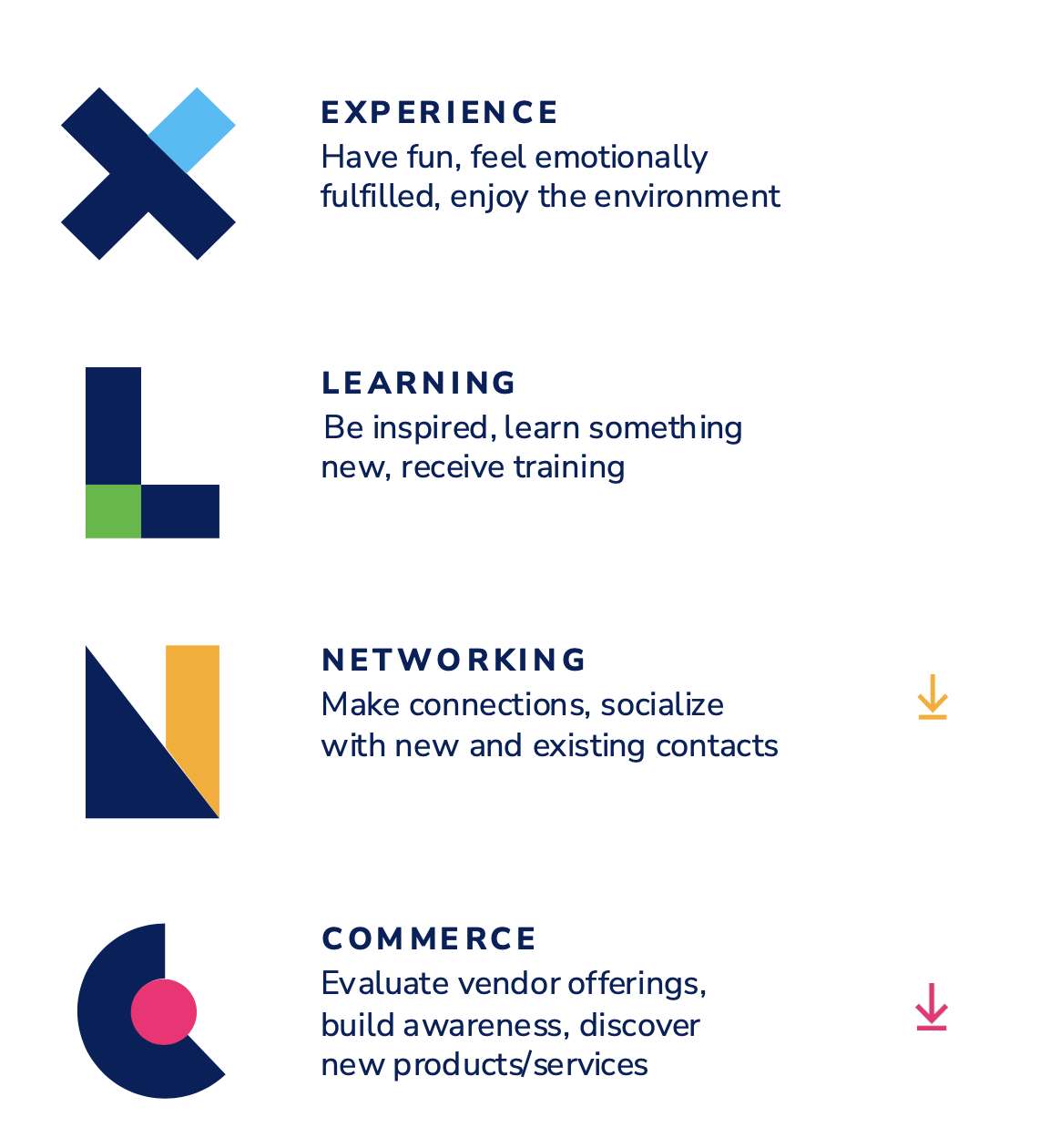MeetingMentor Magazine
Mind the Attendee Expectation Gap

ConferenceDirect delivered on attendee peak-moment expectations at this year’s APM in Philadelphia.
If you think you know what attendees want — such as cool AV and big-name speakers — you may want to think again. According to new research, it isn’t the flashy production values or high-tech activations that provide that event X factor that makes a good show a great one.
Providing an “experience” has become a common goal for meeting and event planners looking to make their event a must-attend. But what worked in the past — or worked well enough, anyway — may no longer suffice in today’s increasingly competitive environment. According to the new eXperience Trends Report 2025 from Freeman released at IMEX America last month, “Organizers often think of experience multisensory moments, striking décor or high-tech activations — the flash that’s supposed to create the X factor. But our research shows that these experiential elements aren’t always the ways to deliver an experience to remember.”
In fact, while flash can be fun, attendees commit to an event based on the same fundamentals they always have: tangible objectives tied to learning, networking and doing business. As the report says, “Production pizazz doesn’t matter unless those foundational goals are met.”
However, pizazz is in fashion these days, with 78% of planners saying their events deliver memorable “peak moments,” which they tend to say happen due to big-name speakers, extravagant galas and awesome AV and production values — the elements that can produce intangibles like energy, inspiration and atmosphere. The report includes event organizer quotes about what their perception of event experience is, such as, “Experience is about linking events with emotions so they can remember them for the rest of their lives in a meaningful way.” Who wouldn’t want to design a meeting that hit that goal?
And yet, only 40% of attendees say the events they attend hit that peak-moment mark. That’s in large part because they have a different definition of what an event experience means to them. Instead of atmosphere, they’re focused on objectives, which means their definition of peak moments come more from making connections with and learning from peers and colleagues and learning about new products, all of which can help them further their professional goals. The attendee quotes reflect this, saying their perception of event experience is “How many new contacts I can make and how many people I can connect with in my network,” and “Being able to find new products, get information and network with people in the industry.”
 The Freeman data further shows a disconnect on some practicalities, such as wayfinding. While planners and attendees both pegged difficulty navigating the event space as a major cause of friction and/or a negative experience at a professional event, attendees added as their next top irritants “confusing expo floor layout” and “challenges finding vendors,” two factors that barely registered with planners surveyed for the study. Instead, planners believe top friction points are poor-quality food and a lack of pre-event communications, neither of which were flagged as big issues by attendees. Freeman recommends some easy ways to reduce these major friction points, such as personalized expo floor guides that make it easier to find the exhibitors, colleagues and sessions they most want to see.
The Freeman data further shows a disconnect on some practicalities, such as wayfinding. While planners and attendees both pegged difficulty navigating the event space as a major cause of friction and/or a negative experience at a professional event, attendees added as their next top irritants “confusing expo floor layout” and “challenges finding vendors,” two factors that barely registered with planners surveyed for the study. Instead, planners believe top friction points are poor-quality food and a lack of pre-event communications, neither of which were flagged as big issues by attendees. Freeman recommends some easy ways to reduce these major friction points, such as personalized expo floor guides that make it easier to find the exhibitors, colleagues and sessions they most want to see.
The report, based on surveys of 2,672 attendees and meeting planners around the globe, found that this disconnect between what planners think attendees want and what they truly value is one that all meeting and event planners should pay attention to. The reason? Those who get that “peak moment” are 85% more likely to come back next year. Those who don’t — which according to the report is 70% of first-time attendees — are lost opportunities.
Of course, results may vary, depending on the type of meeting or event. For example, high-end production, immersive experience and gorgeous galas may be more likely to hit the mark for corporate brands hosting user conferences and employee events. The disconnect is much more profound, and important, for associations hosting professional conferences and trade shows, whose attendees are much more focused on fulfilling their core learning, networking and business goals, Freeman emphasizes in the report.
The key to bridging the gap, the report says, is to consider experience through the lenses of learning, networking and commerce. “Don’t treat experience as if it’s in a silo. Instead, ask: Does the environment support the learning attendees expect? Are there clear, intentional spaces for connection? Can people easily discover and engage with solutions?
“Experience isn’t separate from learning, networking and commerce,” the report continues. “It’s how these core goals come to life.”
Free Subscription to
MeetingMentor Online
"*" indicates required fields
About ConferenceDirect
About MeetingMentor